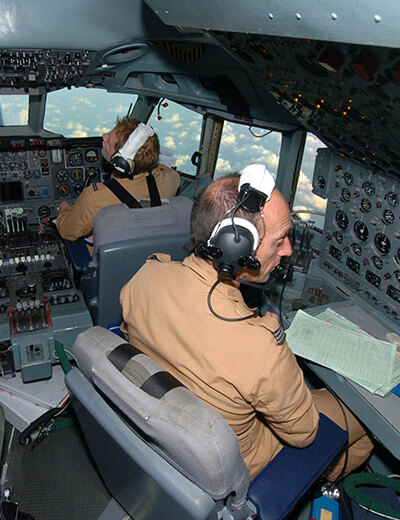In the dynamic world of aviation, airlines face relentless pressure to ensure safety while managing complex operations. A single oversight can escalate into costly incidents or worse. Enter the Line Operations Safety Audit for Flight Operations (LOSA-F), a proactive, data-driven tool that empowers airlines to identify threats, manage errors, and enhance safety before risks materialize. By integrating LOSA into your Safety Management System (SMS), airlines can achieve predictive safety—the ultimate goal of proactive risk management. In this 2,000-word guide, we’ll explore what LOSA is, its benefits for airlines, and how ASMS-Pro’s LOSA solution revolutionizes flight safety.
What is LOSA for Airlines?
A Line Operations Safety Audit for Flight Operations (LOSA-F) is a formal, proactive process where expert observers—typically fellow pilots—monitor normal flights from the jump seat to collect safety-related data. Unlike a checkride or line check, LOSA is confidential, non-punitive, and focused on real-time operations. Observers record:
- Environmental Conditions: Weather, air traffic control interactions, or airport constraints.
- Operational Complexity: Delays, scheduling pressures, or procedural ambiguities.
- Human Performance: Flight crew decision-making, communication, and error management.
LOSA identifies threats—such as adverse weather, maintenance issues, or procedural gaps—and reveals how flight crews respond. It also tracks errors and undesired aircraft states (e.g., incorrect configurations) to understand their management. This data-driven approach, rooted in the Threat and Error Management (TEM) framework, provides a diagnostic snapshot of operational safety. For insights on leadership’s role in implementing LOSA, visit List Duties of Accountable Executive in Aviation SMS.
Why LOSA is Not a Checkride
LOSA is distinct from traditional evaluations. It’s conducted by a non-threatening company employee, often a pilot, who takes notes during routine flights without interfering. The process is anonymous, ensuring crews feel safe to operate naturally. After data collection, a final analytical report offers recommendations to reinforce strengths and address weaknesses, making LOSA a cornerstone of predictive safety.
Why Airlines Need LOSA
Airlines operate in a high-risk environment where threats like weather, delays, or maintenance issues are constant. LOSA uncovers how these threats interact with human performance, enabling airlines to stay ahead of risks. According to a 2023 Aviation Safety Network study, airlines using LOSA reported a 20% reduction in operational errors. By integrating LOSA into SMS, airlines achieve:
- Predictive Risk Management: Identify systemic issues before they lead to incidents.
- Enhanced Training: Tailor Crew Resource Management (CRM) based on real-world data.
- Stronger Safety Culture: Foster trust through non-punitive observations.
Modern tools amplify LOSA’s impact. Explore how Advantages of Cloud-Based Databases for Aviation SMS streamline LOSA data analysis for actionable insights.
Benefits of LOSA for Airlines
LOSA delivers tangible benefits that enhance safety and efficiency:
- Potential Insurance Savings: Reduced incidents lower premiums.
- Cost Reduction: Fewer delays and damages save millions annually.
- Improved Employee Morale: Non-punitive audits build trust.
- Increased Safety Awareness: Data-driven insights promote proactive behaviors.
A 2024 IATA report noted airlines with LOSA programs saw a 15% boost in employee safety reporting. Communicating these benefits is key. Learn how at What is a Safety Newsletter?.
How LOSA Works in Practice
LOSA follows a structured process:
- Planning: Define objectives and train observers on TEM.
- Observation: Conduct jump-seat audits during normal flights.
- Data Collection: Record threats, errors, and crew responses.
- Analysis: Aggregate data into a comprehensive report.
- Recommendations: Suggest training, procedural, or system improvements.
For example, a LOSA might reveal frequent checklist errors during high-workload phases, prompting targeted CRM training. Your LOSA solution simplifies this with real-time data tools, as detailed in Advantages of Cloud-Based Databases for Aviation SMS.
Challenges in Implementing LOSA
Despite its benefits, LOSA faces hurdles:
- Cultural Resistance: Crews may distrust observers.
- Resource Demands: Training observers requires time and budget.
- Data Management: Analyzing large datasets is complex.
Your LOSA solution addresses these by offering user-friendly software and training support. Leadership is critical to overcoming resistance, as outlined in List Duties of Accountable Executive in Aviation SMS.
Strategies to Maximize LOSA Success
1. Build Trust
Emphasize LOSA’s non-punitive nature through training. Share findings via What is a Safety Newsletter?.
2. Leverage Technology
Use cloud-based platforms for data analysis, per Advantages of Cloud-Based Databases for Aviation SMS.
3. Engage Leadership
Executives should champion LOSA, as detailed in List Duties of Accountable Executive in Aviation SMS.
Case Study: SkyHigh Airlines
SkyHigh Airlines implemented LOSA in 2023 after a near-miss. Using ASMS-Pro’s LOSA solution, they trained 50 observers and audited 200 flights. Results included a 25% reduction in checklist errors and a 30% increase in safety reporting. Leadership’s role was key, per List Duties of Accountable Executive in Aviation SMS.
The Future of LOSA
AI and global standards will enhance LOSA’s predictive power. Your LOSA solution is ready, leveraging cloud-based databases.
Conclusion
LOSA for airlines is the ultimate proactive safety tool, transforming SMS into a predictive powerhouse. Start today with ASMS-Pro’s LOSA solution. Explore resources like List Duties of Accountable Executive in Aviation SMS, Advantages of Cloud-Based Databases for Aviation SMS, and What is a Safety Newsletter?.
References

U.S. Navy photo by Photographer's Mate Class 2nd Peter J. Carney [Public domain], via Wikimedia Commons